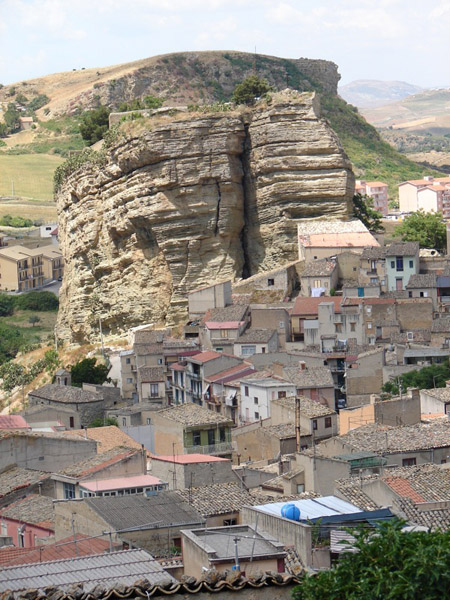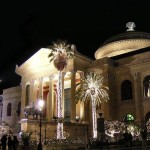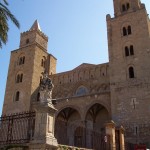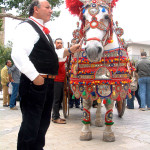Pursued by the recurring connection to the organized crime, Corleone is trying to shake off the stereotype of city where the Mafia phenomenon originated, from the saga by Francis Ford Coppola. Many tourists come to Corleone just to get a photo before the welcome sign at the entrance of the town, without looking around.Others look almost like hounds, searching traces to relate the streets and the inhabitants of Corleone with the ways and the characters of the Grandfather films. They go away disappointed, almost like feeling deceived. So, those who pretend to find in Corleone something related to the famous saga will be definitely disappointed.

Corleone is a town of Arabic origin, full of houses very close to each other and alleys where no urban logic configuration seems to exist. Its origin would be going back to the Neolithic period, about 6000 b.C. The archaeological findings of ninety years have started the debate about the dating period before the Arabs, suggesting that Corleone might be the ancient settlement of Schera. There is no doubt about the presence of the Byzantines, Arabs and Normans, who in 1072 occupied the city. Corleone is located between Palermo and Agrigento and it was the site of contention and surveillance outpost in the various wars among the Sicilian cities. Its strategic position on a basin protected by a complex of limestone gave importance to Corleone during centuries.
During the twentieth century, the poverty that characterized we could the inhabitants of Corleone, mostly farmers, caused a mass emigration to America, and particularly to the United States.
The core of Corleone was built between two twin rocks. On the first was erected a Saracen control tower, the Soprano castle, and on the second, in the middle of the town, was built the medieval castle of the Franciscans monks. At the foot of this waterfall is the Two Rocks Fall (Cascata delle due Rocche), formed by the jump of the San Leonardo river, a tributary of the Belice river, in a natural lake surrounded by the remains of an aqueduct, probably of Arab origin.
The «Pippo Rizzo» Civic Museum, located in the Provenzano Palace, shows an archaeological exhibition about the city. Among the most significant pieces there is the «Milestone» (Pietra Miliare), which has a Latin inscription of 252 b.C., the oldest in Sicily. In addition to this, there are the remains of a Roman mosaic from the Imperial period (first century a.C.), votive statuettes belonging to the excavations of the Old Mountain, and several pieces of different ages.
Corleone is considered as the city of a hundred churches, thanks to its huge ecclesiastical heritage, from which we can highlight the Capuchin Monastery, the Monastery of San Salvatore, the Church of San Agostino(sixteenth century) and the Church of San Domenico (1547).
The main Church, called Chiesa Madre, deserves special attention. It is dedicated to San Martino and was built in 1382 in Arabian style and with an imposing structure. Enlarged in the fifteenth century, it was completed in 1700 with its large dome frescoed by Carmelo Sarpiatra.
Around Corleone arise peaceful villages in the countryside, where nature still appears immune to real estate development typical of the most important Sicilian cities.





